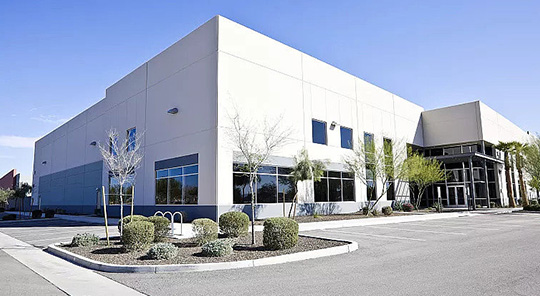Machine vision has a wide range of industrial applications, with core functions including measurement, detection, recognition, positioning, etc. The industrial chain can be divided into upstream component level markets, midstream system integration/complete equipment markets, and downstream application markets. There are software and hardware providers in the upstream of machine vision, such as light sources, lenses, industrial cameras, image capture cards, and image processing software. In the midstream, there are integrated and complete machine equipment providers. The industry has a wide range of downstream applications, mainly in the fields of electronic manufacturing, automobiles, printing and packaging, tobacco, agriculture, medicine, textiles, and transportation.
The global market for machine vision is mainly distributed in North America, Europe, Japan, China and other regions. According to statistical data, the global market size for machine vision systems and components was 3.67 billion US dollars in 2014, 4.2 billion US dollars in 2015, 6.2 billion US dollars in 2016, and a compound annual growth rate of about 12% from 2002 to 2016. According to market data in North America, the integration of machine vision systems is estimated to be about 6 times that of the vision systems and components market.
Chinese machine vision started with the introduction of technology in the 1980s, and with the full line introduction of semiconductor factories in 1998, machine vision systems were also introduced. Before 2006, domestic machine vision products were mainly concentrated in foreign-funded manufacturing enterprises, with relatively small scales. Starting from 2006, the customer base of industrial machine vision applications began to expand to printing, food and other inspection fields. In 2011, the market began to grow rapidly. With the increase of labor costs and the upgrading demand of manufacturing, coupled with the rapid development of computer vision technology, more and more machine vision solutions penetrated into various fields. By 2016, the size of China's machine vision market had reached nearly 7 billion yuan.
In machine vision, defect detection is one of the most widely used functions, mainly detecting various information on the surface of products. In modern industrial automation production, each process has a certain defect rate in continuous mass production. Although the rate is small when viewed separately, multiplying it becomes a bottleneck for enterprises to improve yield. Moreover, the cost of removing defects after completing the entire process will be much higher (for example, if there is positioning deviation in the solder paste printing process, and this problem is not discovered until online testing after chip installation, the cost of repair will be more than 100 times the original cost). Therefore, timely detection and defect removal are very important for quality control and cost control, and are also important cornerstones for further upgrading the manufacturing industry.
In the testing industry, compared to human vision, machine vision has significant advantages
1. High accuracy: Human vision is 64 grayscale and has weak resolution for small targets; Machine vision can significantly improve the grayscale level and observe targets at the micrometer level;
2. Fast speed: Humans cannot see fast moving targets clearly, and machine shutter time can reach the microsecond level;
3. High stability: Machine vision solves a very serious problem for humans, which is instability. Artificial visual inspection is a labor-intensive and laborious industry, and no matter what reward and punishment system you design, there will be a relatively high rate of missed detections. However, machine vision detection equipment does not have fatigue problems or emotional fluctuations. As long as it is something you have written in the algorithm, it will be executed carefully every time. Significantly improve the controllability of quality control results.
4. Integration and retention of information: The amount of information obtained by machine vision is comprehensive and traceable, and relevant information can be easily integrated and retained.
Machine vision technology has developed rapidly in recent years
1. The rapid development of image acquisition technology
Firmware such as CCD and CMOS are becoming increasingly mature, image sensitive devices are shrinking in size, the number of pixels and data rates are constantly increasing, and the speed of resolution and frame rate improvement can be said to be rapid. The product series is also becoming more and more diverse, with continuous optimization in parameters such as gain, shutter, and signal-to-noise ratio. Through core testing indicators (MTF, distortion, signal-to-noise ratio, light source brightness, uniformity, color temperature, and comprehensive evaluation of system imaging ability), the comprehensive selection of light sources, lenses, and cameras is being carried out, enabling many difficult problems in previous imaging to be continuously overcome.
2. The rapid development of image processing and pattern recognition
In image processing, with the extraction of high-precision edge information from images, many low contrast defects that were originally mixed in background noise and difficult to directly detect begin to be resolved.
In pattern recognition, it can be seen as a labeling process, dividing the recognized patterns into their respective patterns based on certain metrics or observations. Decision theory and structural methods are mainly used in image recognition. The foundation of decision theory methods is decision functions, which are used to classify and recognize pattern vectors based on timed descriptions (such as statistical textures); The core of the structural method is to decompose objects into patterns or pattern primitives, and different object structures have different string of primitives (or strings). By using the given pattern primitives on unknown objects, the encoding boundary is calculated to obtain the string, and then its class is determined based on the string. In terms of feature generation, many new algorithms continue to emerge, including features based on wavelets, wavelet packets, and fractals, as well as unique binary component analysis; The design of support vector machines, deformable template matching, and linear and nonlinear classifiers is also constantly being extended.
3. Breakthroughs brought by deep learning
Traditional machine learning mainly relies on humans to analyze and establish logic in feature extraction, while deep learning simulates brain work through multi-layer perceptrons, constructs deep neural networks (such as convolutional neural networks) to learn simple features, establish complex features, learn mappings, and output. During the training process, all levels are continuously optimized. In specific applications, such as automatic ROI region segmentation; Punctuation positioning (flexible detection of unknown defects through anti truth vision); Detect defects that cannot be described or quantified from heavily noisy images, such as orange peel defects; Distinguish between true and false defects in the detection of glass cover plates. As more and more machine vision software based on deep learning is pushed to the market (including Vidi in Switzerland, SUALAB in South Korea, and Yingke Academy in Hong Kong), the empowerment of machine vision by deep learning will become increasingly apparent.
4. The Development of 3D Vision
3D vision is still in its early stages, and many applications are using 3D surface reconstruction, including navigation, industrial inspection, reverse engineering, surveying, object recognition, measurement and grading, etc. However, accuracy issues limit the application of 3D vision in many scenarios. Currently, the first application in engineering is standard part volume measurement in logistics, and it is believed that there is huge potential in this area in the future.
To completely avoid replacing manual visual inspection, machine vision still has many difficulties to overcome:
1. Light source and imaging: High quality imaging is the first step in machine vision. Due to issues such as surface reflection and refraction of objects with different materials, the extraction of object features can be affected. Therefore, light source and imaging can be said to be the first challenge that machine vision detection needs to overcome. For example, in the detection of scratches on glass and reflective surfaces nowadays, many problems are stuck in the integrated imaging of different defects.
2. Feature extraction in low contrast images with heavy noise: In heavy noise environments, it is often difficult to distinguish between true and false defects, which is also the reason why many scenes always have a certain false detection rate. However, with the rapid development of imaging and edge feature extraction, various breakthroughs have been continuously made in this area.
3. Identification of unexpected defects: In applications, it is often given specific defect patterns and machine vision is used to identify whether they have actually occurred. However, it is common to encounter many obvious defects that have not occurred before, or that the patterns of occurrence are too diverse, leading to missed detections. If it were a person, although they were not asked to detect this defect in the operation process file, they would notice it and have a higher chance of catching it, and the "intelligence" of machine vision in this regard is still difficult to break through.
The situation of the machine vision industry chain
1. Upstream component level market
Mainly including providers of light sources, lenses, industrial cameras, image capture cards, image processing software, etc. In recent years, smart cameras, industrial cameras, light sources, and boards have maintained a growth rate of no less than 20%. According to a survey conducted by the China Machine Vision Industry Alliance (CMVU), there are now nearly 200 international machine vision brands that have entered China (such as core component manufacturers represented by Cognex, Dalsa, and Baomeng, while those represented by Keyence, Omron, Panasonic, Bona, NI, etc. have also entered the core components and system integration of machine vision). There are also over 100 Chinese owned machine vision brands (such as Hikvision, Huarui, Mengtuo Optoelectronics, Shenzhou Vision, Shenzhen Canrui, Shanghai Fangcheng, and Shanghai Bochuang Electric), and over 300 machine vision product agents (such as Shenzhen Hongfu Vision and Weishi New Era). Sanbao Xingye, Lingyunguang, Sunshine Vision, etc. Many domestic machine vision component markets start with representing foreign brands, and many companies have good cooperation with their foreign counterparts, which has a certain degree of exclusivity, which poses a certain threshold for potential entrants. Therefore, high-quality product agents also have good market competitiveness and profit performance. Meanwhile, domestic industrial visual core components represented by Hikvision and Huarui are rapidly rising.
2. Mid stream system integration and overall equipment market
There are over 100 domestic midstream system integration and complete equipment suppliers who can provide comprehensive machine vision solutions to automation companies in various industries, such as Lingyunguang, Weishi New Era, Jiaheng, Linghua, Sunshine Vision, Dingxin, Daheng Image, etc. Due to the significant gap between domestic products and international ones, many midstream system integrators and equipment manufacturers have started trading core components. Therefore, many still prefer foreign brands in the selection of visual products. Domestic brands often need to develop their own solution integration capabilities in order to better face market competition in order to promote their software and hardware products.
3. Downstream application market
Downstream of machine vision, it is mainly a company that provides non-standard automation comprehensive solutions to end users. Its industry attributes are very strong, and its core competitiveness lies in a comprehensive understanding of the industry and production, as well as the integration of multiple technologies. Due to the cyclical nature of industry automation, it is deeply influenced by the overall upgrading speed, shipment volume, and profit situation of the industry. Therefore, in the past two years, the most important driving force for the popularization of machine vision applications has been in the electronic manufacturing industry, followed by automobiles and pharmaceuticals.
(1) Semiconductor and Electronics Production Industry: From the distribution of applications in the domestic machine vision industry, 46% are concentrated in the electronics and semiconductor manufacturing industry, including classification cutting of wafer processing and manufacturing, PCB inspection (final inspection of substrates, inner/outer boards, finished product appearance, etc.), SMT mounting inspection, AOI defect inspection of the entire LCD process, surface defect inspection of various 3c components, and appearance inspection of 3c products
(2) Automobile: body assembly inspection, geometric dimensions and error measurement of parts, surface and internal defect detection, gap detection, etc
(3) Printing and packaging testing: tobacco shell printing, food packaging and printing, aluminum-plastic plate packaging and printing of drugs, etc
(4) Agriculture: Grading, Inspection, and Classification of Agricultural Products
(5) Textile: detection of defects such as foreign fibers, cloud weaving, warp and weft defects, identification of surface fuzz on fabrics, analysis of yarn structure, etc.
Future Development Trends of Machine Vision Systems
1. Embedded solutions are developing rapidly, with outstanding performance and cost advantages for smart cameras. Embedded PCs will become increasingly powerful
2. Modular general-purpose software platforms and artificial intelligence software platforms will reduce developer technical requirements and shorten development cycles
3. 3D vision will move towards more application scenarios
Note: This article (including images) is a reprint, and the copyright of the article belongs to the original author. If there is any infringement, please contact us to delete it.








